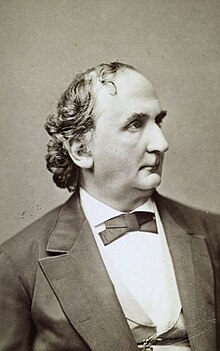
Philipp Ludwig von Seidel ([fɔn ˈzaɪdəl]; 24 October 1821 in Zweibrücken, Germany – 13 August 1896 in Munich, German Empire) was a German mathematician. He was the son of Julie Reinhold and Justus Christian Felix Seidel.
Philosopher & math theorist Imre Lakatos credits von Seidel with discovering, in 1847, the crucial analytic concept of uniform convergence, while analyzing an incorrect proof put forth earlier by Augustin-Louis Cauchy.
In 1857, von Seidel contributed to the field of optics when he decomposed the first order monochromatic aberrations into five constituent aberrations. They are now commonly referred to as the five Seidel Aberrations.
The lunar crater Seidel is named after him. His doctoral students include Eduard Study and Hermann Wiener.
The Gauss–Seidel method is a useful numerical iterative method for solving linear systems.
See also
References
- "Philipp Ludwig von Seidel". School of Mathematics and Statistics, University of St Andrews, Scotland. May 2000.
- Lakatos, Imre (1976). Proofs and Refutations. Cambridge University Press. p. 141.
External links
[REDACTED] Media related to Philipp Ludwig von Seidel (mathematician) at Wikimedia Commons
This article about a German mathematician is a stub. You can help Misplaced Pages by expanding it. |